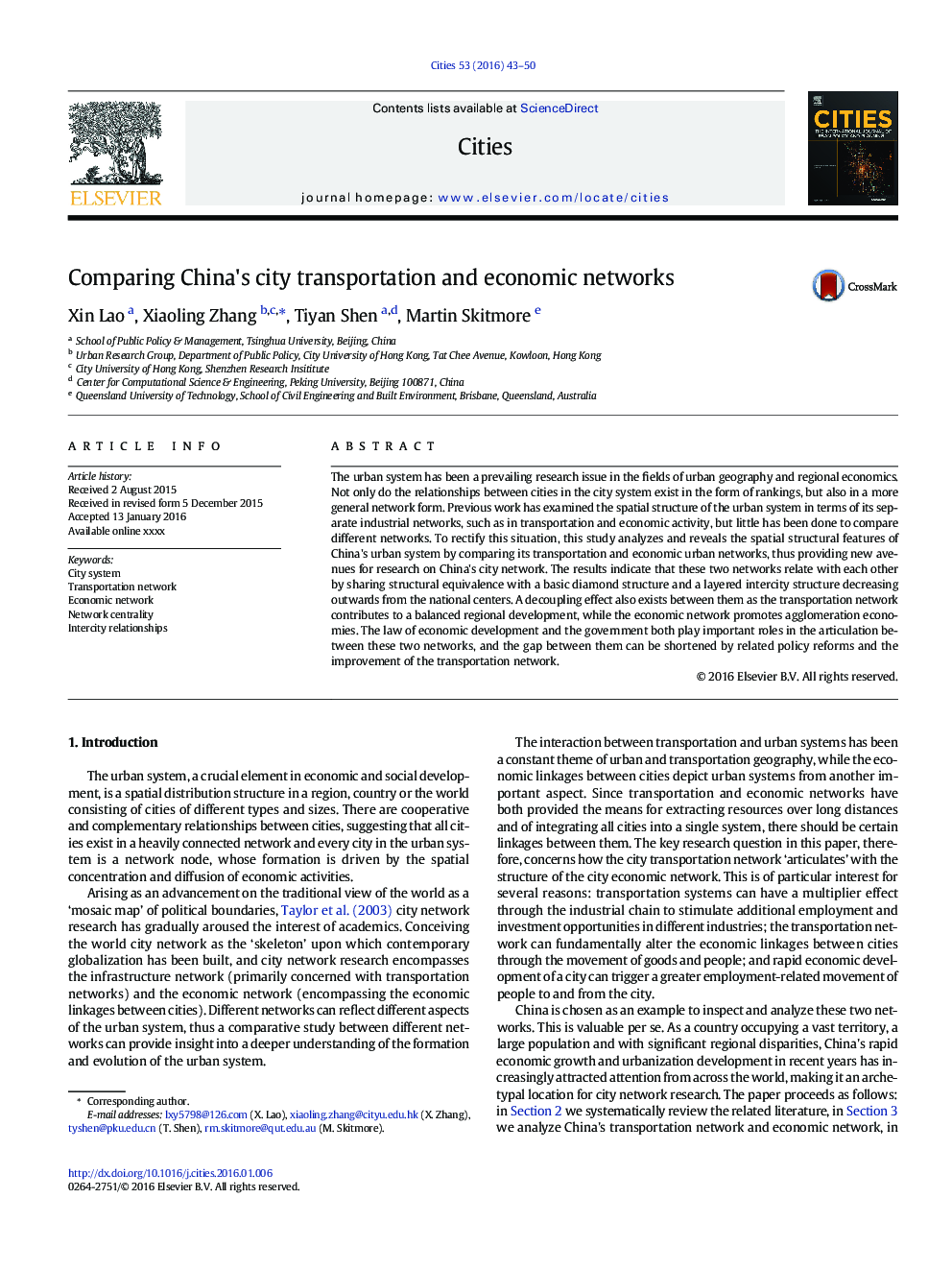| Article ID | Journal | Published Year | Pages | File Type |
|---|---|---|---|---|
| 7418170 | Cities | 2016 | 8 Pages |
Abstract
The urban system has been a prevailing research issue in the fields of urban geography and regional economics. Not only do the relationships between cities in the city system exist in the form of rankings, but also in a more general network form. Previous work has examined the spatial structure of the urban system in terms of its separate industrial networks, such as in transportation and economic activity, but little has been done to compare different networks. To rectify this situation, this study analyzes and reveals the spatial structural features of China's urban system by comparing its transportation and economic urban networks, thus providing new avenues for research on China's city network. The results indicate that these two networks relate with each other by sharing structural equivalence with a basic diamond structure and a layered intercity structure decreasing outwards from the national centers. A decoupling effect also exists between them as the transportation network contributes to a balanced regional development, while the economic network promotes agglomeration economies. The law of economic development and the government both play important roles in the articulation between these two networks, and the gap between them can be shortened by related policy reforms and the improvement of the transportation network.
Related Topics
Social Sciences and Humanities
Business, Management and Accounting
Tourism, Leisure and Hospitality Management
Authors
Xin Lao, Xiaoling Zhang, Tiyan Shen, Martin Skitmore,
